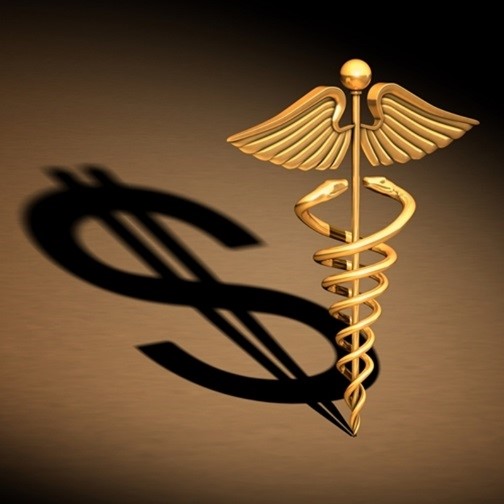Success in the biopharmaceuticals industry comes down to continually developing new and useful pharmaceuticals. Even the most innovative products will eventually see their patents expire and their makers’ competitive advantage eroded. Then, imitations will flood the market, steal market share and threaten your organization’s success
Biopharmaceutical companies can overcome this challenge by purchasing new equipment that improves drug production efficiency. In doing so, they will need to manage their surplus equipment by reselling it or redeploying it elsewhere in their organizations. This article will explain how working with a trusted reverse supply chain partner can benefit biopharmaceutical companies by helping them manage their surplus, achieve maximum recovery on all surplus sold and free up capital and floor space for new equipment.

How Expiring Patents Affect Biopharmaceutical Companies
Over the last few years, biopharmaceutical companies have lost billions of dollars in potential sales due to expiring patents. Mass production of generic drugs by small pharmaceutical manufacturers and foreign companies has overtaken “blockbuster drugs.” Perhaps the most well-known example of this came in 2011 when Pfizer’s patent for the popular drug Lipitor expired. After the patent expired, Pfizer’s global sales of Lipitor dropped 42 percent and the company’s profits fell by 19 percent.1
New medicines can take over a decade to go from initial discovery of a compound to approval by the Food and Drug Administration. The average cost of developing a new drug is roughly $800 million. Additionally, the patent terms are fairly short – averaging about 11.5 years before they expire. This leaves pharmaceutical manufacturers very little time to recoup their research and development and production costs.2
Patented pharmaceuticals account for about 70 percent of drug sale revenues. The impact of the recent spate of patent expirations on 2015 revenues is estimated at $66 billion, a notable increase from an impact of $34 billion in 2014.3
How a Reverse Supply Chain Partner Can Help Biopharmaceutical Companies Innovate
Today, many major players in the biopharmaceutical industry are outsourcing their research & development (R & D) departments to Contract Research Manufacturers (CROs) to lower costs and get pharmaceuticals to trial faster. With R & D no longer in-house, biopharmaceuticals companies may be faced with surplus R & D assets and the need to sell them. At the same time, biopharmaceuticals companies will need new equipment to produce their new pharmaceuticals at the necessary efficiencies and scale. This will result in a need for biopharmaceuticals companies to sell their now-obsolete manufacturing equipment.
A reverse supply chain partner will help you sell those old assets quickly to clear room for new ones and free up capital that can be used for further investments. Here are some of the key tasks a reverse supply chain provider can handle for you as you work to bring new assets into your business and sell or redeploy the old ones:
- Surplus asset identification. For organizations that have multiple locations around the world, it’s difficult to get an accurate read on what you have. A reverse supply chain provider will be able to identify every asset in your organization and help you determine the best plan for recovery, whether through selling the surplus or redeploying it within your business.
- Global reach. If selling your surplus assets is the optimal choice, a provider will help you reach potential buyers all over the world. Global reach is important because assets that may be outdated in some markets may be extremely coveted in developing markets.
- Expert valuations. You want to ensure that you’re getting the highest possible recovery value for your assets, and that starts with obtaining pinpoint accurate valuations for each one. With expert appraisers, multiple valuation methods and the ability to appraise intangible assets, a reverse supply chain provider can make sure you are paid for the true value of your assets.
- Finding the right buyers. Using expert marketing and sales strategies, a reverse supply chain provider will attract the highest number of interested buyers possible. From there, the provider can screen and vet every buyer to ensure they are legitimate, protecting you from being connected to potentially illicit activities.

Being able to develop new pharmaceutical products comes from investing in new assets that lead to process improvements.
Case Study: Comprehensive Long-Term Partnership Achieves Nearly $30 Million in Value for Leading Global Pharmaceutical Company
A global pharmaceuticals company that discovers, develops, and delivers innovative medicines partnered with Liquidity Services after it identified the opportunities presented by its surplus research and development, manufacturing and electronics assets. Recognizing that surplus asset management was not among its core competencies, the company sought an expert partner to transform this surplus into an ongoing capital stream.
As a partner, Liquidity Services identifies all surplus assets across the company and taps deep market and valuation expertise to determine their value. This helps the client accurately set auction reserve prices and make informed decisions regarding the management of their surplus. We’ve also been able to find several opportunities for internal redeployment of surplus assets, eliminating the need to buy all new equipment and machinery.
In an eight-year relationship with this client, Liquidity Services has achieved $29 million in total program value for the client. We have recovered $12 million for the client by selling its surplus and saved $17 million through redeployment. As a partner, we’ve ensured that this client can focus on its core competencies while freeing up the necessary capital to make investments that drive the business forward.



Comments are closed.